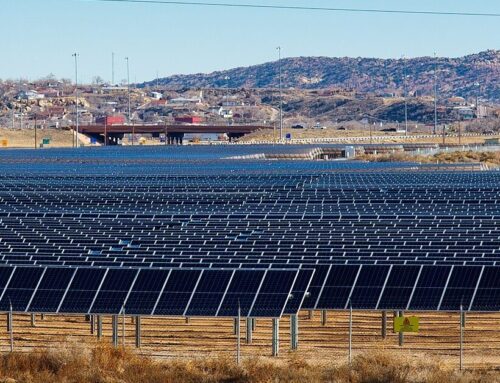Pharmaceutical Pollution Is Widespread Across the World’s Waterways
May 13, 2025
Many of the world’s waterways are awash with varying levels of pharmaceuticals, according to a wide body of research. These medical byproducts come from all different sources, including industrial dumping and agriculture. They can even come from our own waste; peoples’ bodies don’t absorb all the medication they take, so much of it ends up in the sewage system, which then frequently releases into the environment.
A new modeling study estimates that every year, thousands of tons of the most-used antibiotics are released into the world’s rivers from human consumption alone—and 11 percent of them reach the world’s oceans or inland sinks. Researchers have also discovered widespread contamination of aquatic ecosystems with antidepressants, heart medications and other drugs in recent years.
Though levels of drug accumulation in watersheds are often low, even trace amounts can have profound impacts on wildlife and human health—and climate change could be making the problem worse.
Consistent Contamination: For decades, scientists and environmentalists have been sounding the alarm on medical waste polluting the water people depend on. For example, in 2021, researchers found that leaky pipes carrying sewage from Baltimore are “medicating the Chesapeake Bay” with tens of thousands of human doses of pharmaceuticals each day.
Zooming out, the problem is just as stark. For a 2022 study, researchers teamed up to complete a “global reconnaissance of pharmaceutical pollution in rivers” by taking samples at more than 1,000 locations in 104 countries. They found unsafe levels of contaminants in more than a quarter of the spots.
A study published in April zeroed in on antibiotics specifically and found similar results. Researchers used a model to estimate contamination across the world’s rivers based on the annual human consumption of the 40 most-used antibiotics, including ceftriaxone, cefixime and amoxicillin (anyone who has had a bacterial infection has probably heard of this one). They found that 8,500 tons of antibiotics leach into the world’s river system, with the potential of reaching the ocean. This number doesn’t include contamination from manufacturers or the agricultural industry.
In both studies, the highest level of contamination was identified in low-income countries, which often have inadequate wastewater management. Antibiotic concentrations are typically low enough to not directly impact the quality of drinking water for people, but this contamination can have trickle-down impacts on the ecosystem by reducing microbial diversity, threatening fish and algae and potentially fueling antibiotic resistance for certain bacteria, according to the study.
Drug pollution can have a range of impacts on the environment, depending on the type and dose of medication. Recently, a team of researchers published a study that investigated the effects of the anti-anxiety drug clobazam on salmon migration from rivers to the ocean. They exposed separate groups of salmon juveniles to levels of the anxiety medication, an opioid painkiller or both that the fish may encounter in the wild. Then, the researchers released the medicated fish in a river in Sweden and tracked them on their migration to the Baltic Sea.
It turns out the fish that were exposed to anti-anxiety medicine were able to pass by some of the key barriers on their journey—hydropower dams—faster than their unmedicated counterparts. Basically, the fish seemed to have lowered inhibitions, which likely contributed to their success, the study’s authors say. However, this doesn’t mean that drug-induced behavioral changes in wildlife are a positive thing, according to study co-author Michael Bertram.
“Unfortunately, in my line of research, it’s essentially impossible to find things that are actually, genuinely entirely good,” he told me. Bertram is a behavioral ecologist at the Swedish University of Agricultural Sciences who specializes in studying chemical pollution. “The reality is any deviation from the natural behavior and ecology of a species will impact not only that species, but also the surrounding ecological community.”
For example, drug-induced behavioral impacts could change the timing of migrations or pass on to predators that may eat the salmon, which means that drugs can accumulate within the food chain.
The Climate Connection: Global warming can affect drug contamination across the world’s waterways in direct and indirect ways. Climate-fueled droughts can diminish flows of rivers at certain times of the year, which can exacerbate antibiotic contamination, according to the April antibiotic study. On the other end, increasingly severe storms can overwhelm wastewater treatment plants and unleash millions of gallons of untreated sewage into ecosystems, an issue I covered a few weeks ago.
The warming of water in rivers can even affect the uptake of drugs in a fish’s metabolism. Meanwhile, a growing body of research finds that climate change and increased temperatures can give rise to antibiotic-resistant bacteria, Nature reports. Consistent exposure to low levels of antibiotics in the environment can speed up this process, potentially fueling the rise of so-called “superbugs.”
Bertram said that in areas with clean drinking water, people are likely not consuming high enough levels of antibiotics to have a direct impact on their health. But the same can’t be said for the broader environment.
“There is a real threat of the development of antimicrobial resistance, and that then can have all sorts of flow-on effects on wildlife, but also human health,” Bertram said. “In terms of the issue of pharmaceutical pollution, that is a real standout concern.”
To reduce pharmaceutical contamination in waterways, experts emphasize the importance of adequate wastewater treatment facilities and proper disposal of medical waste at an industrial scale.
But Bertram stressed that we also need to target the issue at the source. He and a group of fellow environmental researchers published a paper last year advocating for the pharmaceutical industry to design greener drugs that are less likely to spread and accumulate in waterways.
“It’s this unseen element of when we use products, in this case pharmaceuticals, and we don’t see all of the stages of [their] life cycle, then we can imagine sometimes that they sort of disappear,” Bertram said. “But the reality is, when they are manufactured, they exist, and then, if they’re not properly treated, they will eventually end up in the environment.”
More Top Climate News
Staff and funding cuts at the U.S. Agency for International Development are jeopardizing a program to help African communities move away from high-polluting cooking methods, Lauren Millan reports for Bloomberg. Around a third of the global population cooks on open or semi-open fires with charcoal, coal, firewood, agricultural waste or animal dung as fuel.
The byproducts can be extremely hazardous; one estimate from the International Energy Agency found that these cooking methods contribute to around 3.7 million premature deaths each year. Several USAID programs helped people replace these dirty cookstoves with cleaner alternatives, but they have been caught in the crosshairs of Trump administration cuts to the agency.
A recent study found that the wealthiest 10 percent of the world’s population is responsible for roughly two-thirds of global warming since 1990. The study investigates high-income individuals’ own consumption activities and investments that contribute to the world’s emissions, which fuel increasingly disastrous extreme weather events such as hurricanes and heat waves. The authors say this lays bare one of the key inequities of the climate crisis: Those contributing the most to it are the least impacted.
“This is not an academic discussion—it’s about the real impacts of the climate crisis today,” study co-author Carl-Friedrich Schleussner, a researcher at the International Institute for Applied Systems Analysis in Austria, told The Guardian. “Climate action that doesn’t address the outsize responsibilities of the wealthiest members of society risks missing one of the most powerful levers we have to reduce future harm.”
The U.S. Department of Agriculture will restore much of the climate change-related data and information that was removed from its website in President Donald Trump’s first days of office, Karen Zraick reports for The New York Times. In February, the Northeast Organic Farming Association of New York, the Natural Resources Defense Council and the Environmental Working Group filed a lawsuit against the Trump administration for taking down web pages about federal funding and loans, forest conservation, rural clean energy projects and data related to how climate change might affect national forests and grasslands. On Monday, the government said that it would bring back many of these deleted pages.
About This Story
Perhaps you noticed: This story, like all the news we publish, is free to read. That’s because Inside Climate News is a 501c3 nonprofit organization. We do not charge a subscription fee, lock our news behind a paywall, or clutter our website with ads. We make our news on climate and the environment freely available to you and anyone who wants it.
That’s not all. We also share our news for free with scores of other media organizations around the country. Many of them can’t afford to do environmental journalism of their own. We’ve built bureaus from coast to coast to report local stories, collaborate with local newsrooms and co-publish articles so that this vital work is shared as widely as possible.
Two of us launched ICN in 2007. Six years later we earned a Pulitzer Prize for National Reporting, and now we run the oldest and largest dedicated climate newsroom in the nation. We tell the story in all its complexity. We hold polluters accountable. We expose environmental injustice. We debunk misinformation. We scrutinize solutions and inspire action.
Donations from readers like you fund every aspect of what we do. If you don’t already, will you support our ongoing work, our reporting on the biggest crisis facing our planet, and help us reach even more readers in more places?
Please take a moment to make a tax-deductible donation. Every one of them makes a difference.
Thank you,
Search
RECENT PRESS RELEASES
Related Post





